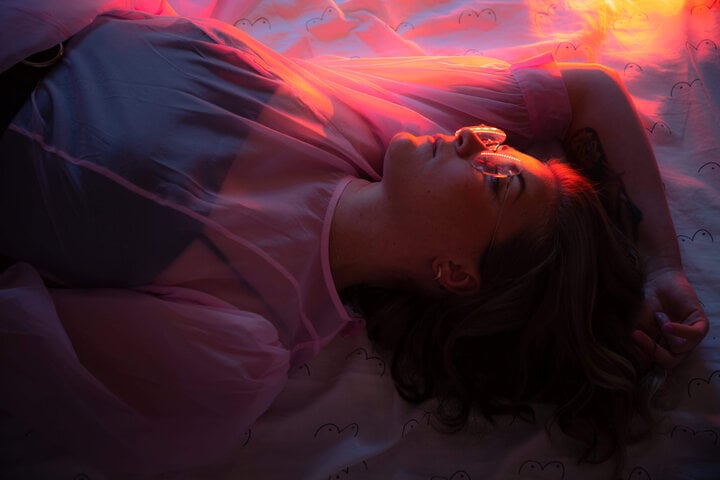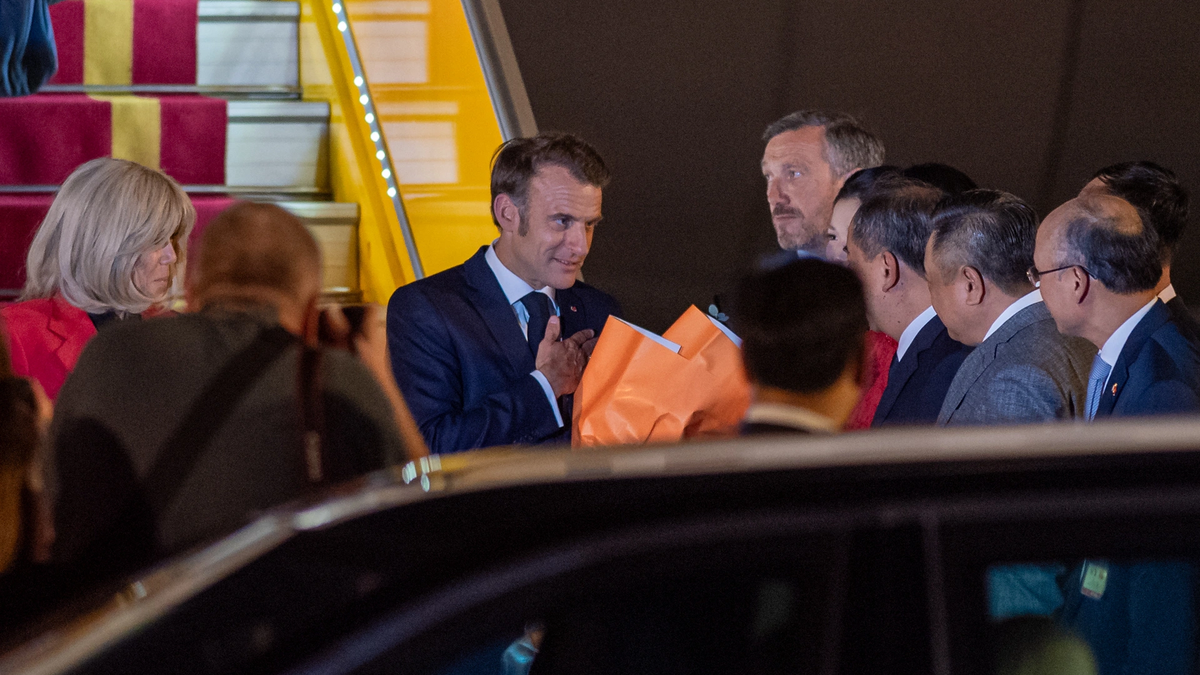Lucid dreaming has fascinated the public and the neuroscience community for decades, fueling blockbusters like “The Matrix” and “Inception.” Now, AI technology is bringing humans closer than ever to controlling their dreams.
Prophetic co-founders Eric Wollberg and Wesley Berry aim to be the first company to develop a wearable device that gives users control over their dreams. What the co-founders have in common is that they were both fascinated by the idea of using an electroencephalogram to create a complete picture of someone’s thoughts.

“Lucid dreaming” occurs when the sleeper is aware that they are dreaming and has some or all control over the dream.
Prophetic has teamed up with Card79, a hardware design and manufacturing company that also partners with Elon Musk’s brain-computer interface company Neuralink, to develop a headband-like device that emits ultrasound waves. The non-invasive prototype is called “Halo.”
Wearable AI is also a hot keyword in the current technology field. For example, Humane AI, a startup founded in 2017 by former Apple employees, debuted the AI Battery at Paris Fashion Week. While legendary iPhone designer Jony Ive and Sam Altman of OpenAI are also said to be working on a hardware project related to this emerging technology.
Explore the subconscious
According to research published in the US National Library of Medicine, neuroscience research on the topic of “lucid-dreaming” dates back to the 1970s, but interest has continued to grow along with the expansion of the field of cognitive neuroscience. On the Reddit forum, the “lucid-dream” subreddit has up to 500,000 members. This topic has also fascinated the public, creating blockbuster movies such as “The Matrix” and “Inception.”
Wollberg said he had his first lucid dream at age 12, and although he doesn’t remember exactly what he did, he called it “the most profound experience I’ve ever had.” By college, these dreams became more frequent, sometimes up to twice a week, and prompted the Prophetic founder to seek out applications for exploring consciousness at a deeper level.
Meanwhile, co-founder Berry has a background in neurotech prototyping, such as feeding EEG data into a transformer neural network — an AI model created by Google — to map out what humans can see in their minds.
The data used to train the Halo algorithm is gamma brainwave signals - the fastest brainwave frequency that can be measured today. These signals often appear when people are in a state of high concentration and are the clearest indicator of a "lucid dream".
The scientists then run the data through a decoding AI model to create “tokens,” before passing these tokens to a neural transformer model. The ultimate goal is to train the AI to detect what brain state “conditions” need to occur and what neural stimulation is needed to optimize prefrontal cortex activation.
The Prophetic wearable uses ultrasound to precisely stimulate the user’s prefrontal cortex while they are dreaming. Research shows that focused ultrasound stimulation can improve working memory, similar to “an idea popping into your head without you knowing where it came from.” Users can then know they are dreaming and take full or partial control of that dream.
The Viet (Source: CNBC)
Source


![[PHOTO] Hanoi fences off demolition of "Shark Jaws" building](https://vphoto.vietnam.vn/thumb/1200x675/vietnam/resource/IMAGE/2025/5/25/1b42fe53b9574eb88f9eafd9642b5b45)


![[Photo] French President Emmanuel Macron and his wife begin state visit to Vietnam](https://vphoto.vietnam.vn/thumb/1200x675/vietnam/resource/IMAGE/2025/5/25/03b59c7613144a35ba0f241ded642a59)

![[Photo] Ea Yieng commune settlement project abandoned](https://vphoto.vietnam.vn/thumb/1200x675/vietnam/resource/IMAGE/2025/5/25/57a8177361c24ee9885b5de1b9990b0e)




















![[Photo] Pink ball and table tennis](https://vphoto.vietnam.vn/thumb/1200x675/vietnam/resource/IMAGE/2025/5/26/d9f770bdfda243eca9806ea3d42ab69b)





























![[Infographic] Vietnam-France Comprehensive Strategic Partnership](https://vphoto.vietnam.vn/thumb/402x226/vietnam/resource/IMAGE/2025/5/26/986f63068ea9413dbbb558ee6c6944f3)





































Comment (0)